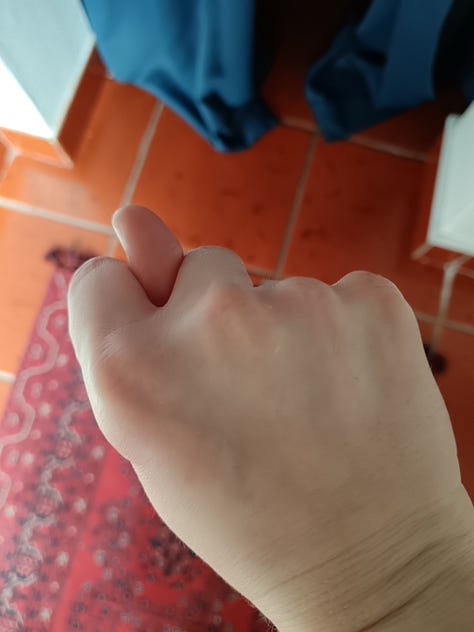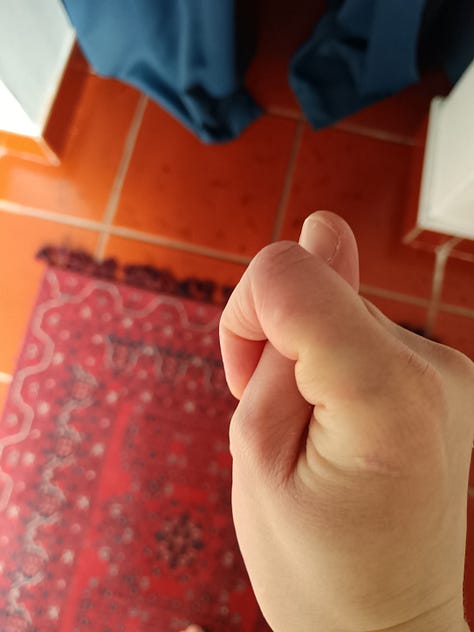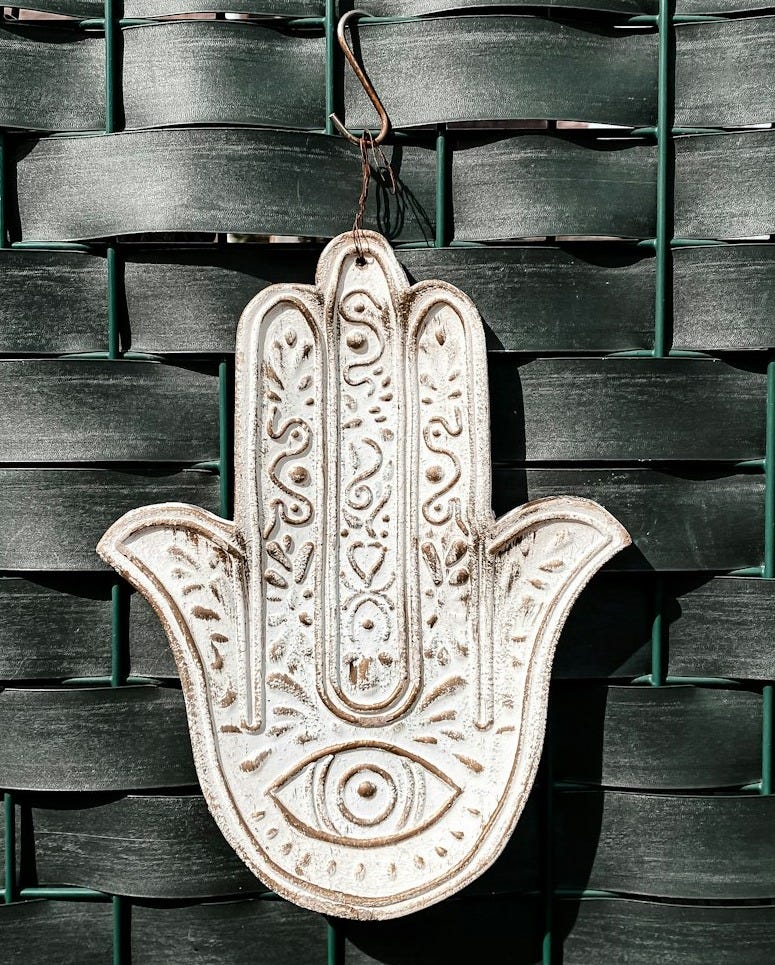Figa is considered an amulet in Portugal, so this hand gesture is of great importance here. It is a phalic gesture, it represents the female organ (vulva), and its name comes from figo, which means fig, because this fruit, when opened, resembles a vulva1.



Before telling you more about the figa, it is important to explain what exactly is an amulet. This is a type of passive object, whose role is to either drive away evil or to imprison evil, avoiding its action2. In the case of the figa, the obscene gesture would repel evil. In the entire country, islands included, it was used against spells and evil eye3, and even in many other occasions as long as the person felt that something could bring her bad luck. For instance in Lisbon it was believed that when someone who did not like us passed us by, we should make the figa with our hand, so that the person would not bring us misfurtune (in portuguese tolher or enguiçar)4. The gesture should be accompanied by the words:
Alho-porro tem três folhas,
O maldita (ou maldito) não me tolhas!Which means:
The leek has three leefs, Oh accursed, do not bring me bad luck!
The figa, like garlic, is also a powerful amulet against witches, and should be used when we are passing by the witch or by her door5. It is very interesting that in the 18th century a priest advised a nun to show the devil a pair of figas each time he tempted her, so it was also believed to have power against the devil6.
But this gesture is also an insult: fazer figas or dar figas, which means, to make or to give figas because, as I said before, this gesture is obscene and should not be done to others, as it (supposedly) shocks the evil spirits and evil in general, so it will also shock others and scandalize them. For some reason, the word figas also acquired the meaning of something small, irrelevant or worthless. In this case people will say “isso vale uma figa”, which means, “this is worth a figa”, i.e. nothing.
This gesture is also believed to attract good luck. It’s common to say “vamos fazer figas para que tudo corra bem”, which means “let’s make figas so that everything works out well”.
Other very popular amulets in Portugal are the mole’s hand and the rabit’s hand, for their similitude to the figa7. It also protects against evil in general, evil eyes and witches.
The figa belongs to the amulets connected to the hand, a very important body part in superstition; according to Leite de Vasconcelos the “hand, as symbol of power, became one of the most ancient and protective amulets”7, as another example we have the very popular hand of Fatima.

Nowadays the figa is still sold and I believe people still do the hand gesture, but other amulets are also becoming popular like the hand of Fatima or the greek eye. This last has made a remarkable return: in the late 19th Century, early 20th Century the tradition of the eye had vanished, the only place the eye could be seen was in Malta. Today this superstition is widespread. I will even quote Vasconcelos7 so that you can see how unexpected was its come back:
“The eye as an amulet against the evil eye was very common in antiquity, but, with the exception of the Maltese and in some boats, or as a Masonic symbol, seems to be out of fashion, belonging exclusively to history”

These are the most important details you need to known about this important hand gesture. I hope you enjoied this week’s post. Until next time!
VASCONCELOS, José Leite de, Etnografia Portuguesa, Vol. IX, Livro III, Imprensa Nacional-Casa da Moeda, Fevereiro 2007, pág. 243
VASCONCELOS, José Leite de, Etnografia Portuguesa, Vol. IX, Livro III, Imprensa Nacional-Casa da Moeda, Fevereiro 2007, pág. 168
Vasconcelos, José Leite de. Signum Salomonis - A Figa - A Barba em Portugal. Etnográfica Press, 1996, https://doi.org/10.4000/books.etnograficapress.4380.
Vasconcelos, José Leite de. Signum Salomonis - A Figa - A Barba em Portugal. Etnográfica Press, 1996, https://doi.org/10.4000/books.etnograficapress.4380.
Vasconcelos, José Leite de. Signum Salomonis - A Figa - A Barba em Portugal. Etnográfica Press, 1996, https://doi.org/10.4000/books.etnograficapress.4380.
Vasconcelos, José Leite de. Signum Salomonis - A Figa - A Barba em Portugal. Etnográfica Press, 1996, https://doi.org/10.4000/books.etnograficapress.4380.
VASCONCELOS, José Leite de, Etnografia Portuguesa, Vol. IX, Livro III, Imprensa Nacional-Casa da Moeda, Fevereiro 2007, pág. 276





Thanks for this!
We have the same thing - “to hold a figa in your pocket” against the evil eye or those you know don’t wish you well. In modern times it’s used to mean “you aren’t getting anything (literally not a “figa”)”
I read somewhere that though Slavs have synonyms for it, “figa” in particular came from visiting foreigners, probably originating from Italian.